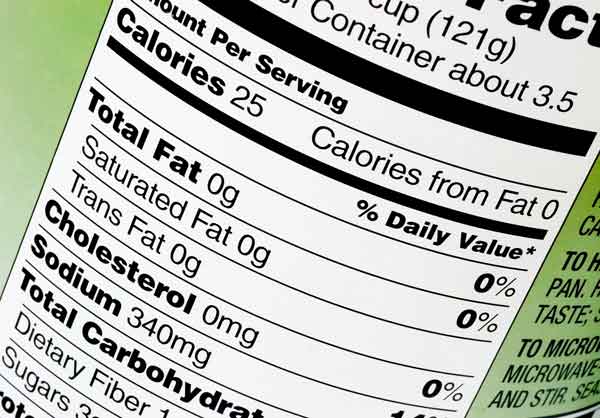Most people look at nutrition labels and become quite confused about what is actually in the foods they are buying. Due to a new makeover, confusing nutrition labels just might be a thing of the past.
The Food and Drug Administration announced on February 27th, 2014 that there is a proposed change to nutrition labels, which will be the very first overhaul in over 20 years. The new labels proposed will show more calories and added sugars. This will make calorie counting easier while helping to highlight those sneaky sugars that slide right past the radar. It will also change required serving sizes like soda.
The goal is to make choosing healthier foods much easier while shopping at the grocery store and the proposal will under-go a 90-day comment period, which may be implemented next year.
The proposal is hoping for major changes on beverages and packaged food and if it is approved, it would mean nutrition labels that emphasize more calories, added sugars and even certain nutrients such as potassium and Vitamin D.
More changes include things like serving sizes. Typically, someone who picks up a 20-ounce soda is not going to stop driving at the recommended serving size of 8-ounces; instead, they are typically going to drink the entire 20-ounce bottle. The new nutrition label will show the right proportion of ingredients per a fill 20-ounce bottle. This will make calorie counting much easier.
There has been a major shift when it comes to healthy eating and more people are looking for healthier options and they are looking at nutrition labels to gain that information. In 20 years, nutrition labels have maintained the same look but now it’s time for something new, something easier to understand and something more helpful as society lives a very fast paced life and nutrition labels have to work harder to keep up with the pace.
In a press release, First Lady Michelle Obama stated, “You as a parent and a consumer should be able to walk into your local grocery store, pick up an item off the shelf, and be able to tell whether it’s good for your family. So this is a big deal, and it’s going to make a big difference for families all across this country.”
The proposal is also subject to change the “calories from fat” section of the label. In fact, that label will no longer be there at all since most people are focusing more on the total calorie intake within each serving and less on fat. Nutritionists have also noted that the type of fat one is eating is more important than the calories from fat. However, Trans fat would remain the same.
The proposed labels will also change how sugar is looked at and that is important since a large part of United States is a diabetic or knows someone who is one. When looking at a label, it is very hard to understand what type of sugar is in the product. Is it natural sugar or sugar that is added by the manufacturer? These new labels will clearly define what is what, making it easier for diabetics to keep only natural sugars in their foods while also helping others to count calories easier.
American Heart Association CEO Nancy Brown explains, “Now when Americans pull a product from the supermarket shelf, they will have a clear idea of how much sugar that product really contains.”
Studies show that while sugar that is added chemically is all the same, many Americans do not realize just how much sugar they are actually eating. It is recommended by the American Heart Association that sugar is limited to no more than half your daily discretionary calories. Sure, that’s not confusing at all. Let me clarify: Typically, an American woman should have no more than 6 teaspoons of sugar or 100 calories from added sugars per day and an American man should have no more than 9 teaspoons of sugar or 150 calories from sugar per day.
In addition to the proposal, the FDA also wants to update daily values from particular nutrients such as Vitamin D, dietary fiber and sodium. An example of a recommended daily limit for sodium is 2,400 milligrams. If this new proposal is passed, the daily recommendation of sodium will decrease to 2,300 milligrams, according to administration officials. Although the FDA has also noted that this number is still too high and usually recommends sodium to be limited to 1,500 milligrams per day.
Many manufacturing companies would also have to admit to the amount of potassium, iron, calcium and Vitamin D that is in their products as well. Studies have shown that many people do not keep enough Vitamin D in their body to keep healthy bones and potassium is very rewarding when it comes to managing blood pressure levels.
Serving sizes will get a huge overhaul since many products were not around 20 years ago when nutrition labels were changed such as sesame oil and sun-dried tomatoes. In fact, 25 categories will be added for these products that came into the picture after the last changing of nutritional labels. The serving sizes will be going up since people do not usually eat just the serving size recommended. However, some serving sizes such as yogurt will be going down.
Brown explains, “This will help people better understand how many calories they actually consume, especially if they plan to eat all the food in a container or package.
The FDA will allow for a 90-day comment period to hear the opinions of the public before making an official decision. If passed, manufacturing companies will have 2 years in order to implement the necessary changes.
